The Naushon, pride of the Island Fleet of steamers, yesterday took her last look at the Island which she has served since she was built in 1929. For the last time she breasted the Island waters which on countless trips have offered their caress or attacked her with savage force. She has been taken over by the federal government and will play her part in the war effort, in some capacity not divulged.
Steamship company officials were notified after midnight the night before, that the Naushon was to be turned over to the government at the end of her run yesterday. Her place on the Island run will be taken by the Martha’s Vineyard, which has been tied up in New Bedford for some time, held in reserve in case summer business warranted putting another steamer on the line.
The fact that the fourth steamer is available will make it possible to bridge the gap left by the loss of the Naushon with the least possible inconvenience to patrons of the line. Today and tomorrow, trips Seven and Eight will be eliminated from the schedule.
This means that the trip from New Bedford, leaving that city at 11:15 a.m., and reaching Oak Bluffs at 1:15 and that leaving Oak Bluffs at 6:45 p.m. and reaching New Bedford at 8:45, will be omitted on those two days.
On Sunday the regular summer schedule will be resumed.
Clouded with Bad Luck
The Naushon’s last call at Nantucket was clouded with bad luck, and she was unable to leave that island at her scheduled time. She had taken two big oil trucks to Nantucket for use at the airport, each weighing 9 1/2 tons. When the first of these heavy trucks was being landed, the gangplank gave way from the boat letting the truck and plank down between the steamer and the wharf.
Big tractors were brought to the scene to aid in raising the truck, but it was a long job and not until late afternoon was the truck finally landed. There was still the second truck and all the other freight to be put ashore.
Meantime the Nantucket arrived and unloaded quickly, sailing at $;30 for the Vineyard where she arrived about 6 last night, ready to take the early trip this morning and to replace the Naushon on the line.
When the Naushon left Oak Bluffs late yesterday afternoon, making her final stop at the Vineyard, the bell on the wharf was rung in salute and the steamer’s whistle was sounded in long and mournful blasts with a singularly sorrowful note. Nothing could have been more eloquent than the voice of whistle and bell, for this is the speech of boats and of Islands, saying more than words and as much as tears.
When the news of the taking of the Naushon spread about the Island last night there was consternation and mourning, and many Islanders ventured to hope that she might yet be returned to the line. Perhaps she was only needed for moving troops to the Island for maneuvers or for some other temporary purpose. But by and large the public knew the truth, that the government is acting for keeps and in grim earnest. The Naushon sailed across Vineyard Sound for the last time last night, and then across Buzzard’s Bay, her destination nominally being New Bedford, but so far as the Islands are concerned she steamed into history, leaving behind her many a happy memory and, at the end, the tilling of the bell on Oak Bluffs wharf and the lingering farewell of her own sad whistle.
Capt. J. Oscar Sandsbury, a Nantucketer and husband of a Vineyard woman, has been captain of the Naushon for some years. It is assumed that the officers and crew of the boat will be transferred to the other steamers, but no details of the probable assignments are yet known.
Largest and Fastest on Line
The Naushon was launched on May 7, 1929, and went into service the following month. She is the largest and fastest of the Island steamers, having a speed of from 14 to 15 knots. She is 250 feet long, about 60 feet in the beam, and has a freight capacity in tons of fifty per cent more than the New Bedford, next best freight carrier of the Island line. The New Bedford is a little more than 210 feet long, and 50 feet in the beam. Her depth is given as 14 feet 3 inches, and the draft of the Naushon is about the same, due to the necessity of passing through Woods Hole.
In her first ten years of service, the Naushon traveled 217,396 miles in trips between the Islands and the mainland, transported 146,939 tons of freight, and carried 1,239,432 passengers.
She was designed by Albert F. Haas, at that time superintendent of marine construction of the New England Steamship Co., and now the line’s superintendent, with offices at New Bedford. The company lists the book value of the Naushon at $612,482.90, and in 1940, after accrued depreciation, the net book value was $379,996.53. This is about three times the value of the entire fleet of Island steamers in 1911.

Editorial: Farewell, Naushon!
So the Naushon has gone to War - not to combat duty, but to take her place among the auxiliary craft of service and supply which support the great effort of the war. What can one say, except Good Luck and Farewell?
Good Luck and Farewell, then, to the Naushon, pride of the Island fleet, keeper of schedules, carrier of countless cars and tons of freight, main reliance of a legion of Island people. She is more than a steamboat. Where she goes, something of the Vineyard and Nantucket must go too. Between Islands and their boats there is a tie like that which binds families and lifelong friends. It is never broken. Wherever the Naushon may steam on her new business of war, she is still our boat.
She will serve the nation as she served these Islands, and nothing that floats can make a prouder record. We shall presently discover in many ways how much she meant to us - more, even, than we could have realized.
The Naushon was built in 1920 and made her appearance on the Island line in June of that year. It is hard to believe that she is now rather more of an old boat than a new one, carrying a weightless load of fond associations for all of us. Her capacity for freight and automobiles, her spacious cabins and decks, her speed, her staunch reliability, all combined to bring to the Islands emancipation from former handicaps and frustrations. She was in herself our new era. The decade of 1929 to 1939 was carried in her hull on seas not always calm — but she rode out all troubles — and was good for many decades more. We had never thought to say farewell to her.
The suddenness with which the government has acted may be taken to mean that the Nanshon was needed, and in these circumstances she should go. No one would keep her from the appointment which cancels all other engagements of American life. Our pride goes with her, and with full hearts we say Farewell!

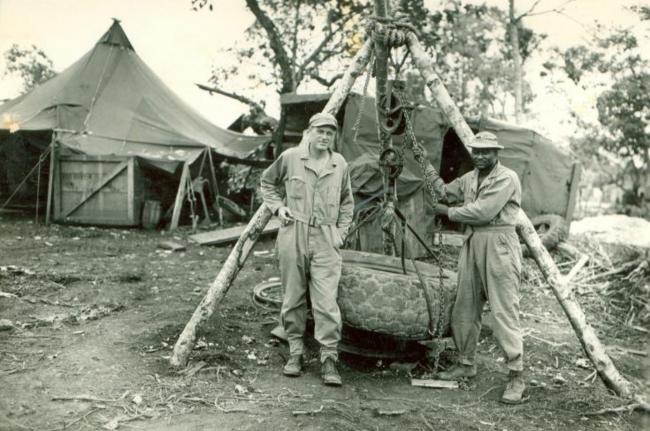


 1 comment
1 comment
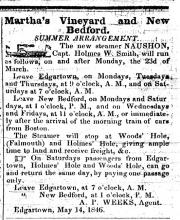

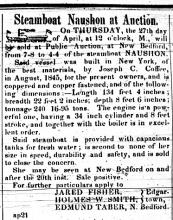
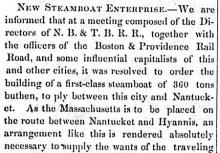
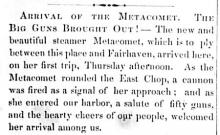
Comments (1)
Comments